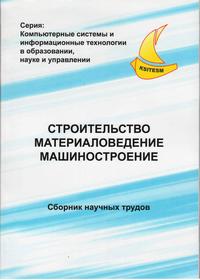Generals cheme of complex systems models of self-organization algorithms construction using evolutionary search
Keywords:
inductive method of self-organization models of complex systems, evolutionary search, algorithm, similarity criterion, partial descriptionAbstract
. Purpose. There are occur tasks in the mathematical modeling, the object of study which are complex systems. Convection, heat transfer and other are the objects examples of study. In addition, such systems could be difficult for study. Because of that, number of small experimental data often obtained. Therefore, the main question is to find mathematical model constructing variant with small amount of input data. The self-organization of mathematical models designed by A.G. Ivahnenko is chose.
Methodology. In comparison with other methods, such as analysis of variance, this method is relatively new. However, during its short stories, it has practical value already proved. The clarification of generating models gives by structural algorithm of self-organization that illustrated at Pic.1. “Partial description” has a special importance. It characterizes the complexity of the model and possibility of its using. Linear “private description” is using most commonly as it pointed in the article. However, considering the scope of the using this method, linear description cannot describe the object of study. Therefore, it proposed to use non-linear “partial description” for this method. In addition, there are examples of non-linear functions that could using during description of the object.
Findings. There are methods of evolutionary search for self-organization of mathematical models are developed. This is search reviewed more detailed in the article and shown a block-diagram of the algorithm at Pic.2. It is suggest using “partial description” in a nonlinear form. There are description to this algorithm and shown the importance of “partial description” form for building object of study a mathematical model.
Originality. There is developed construction of complex systems mathematical models general scheme by using self-organization with model parameters “partial description” evolutionary search. There is distinctive convergence with probability 1 process model parameters “partial description” evolutionary search.
Practical value. Models self-organization general scheme using evolutionary solutions search has been realized programmatically. It is indicated the possibility of these methods more widely using and increasing the simulation accuracy in comparison with existing methods
References
Bukatova L.L., Mikhasov Y.I., Sharov A.M. Evoinformatika: Teoriya i praktika evolutsionnogo modelirovaniya [Evoinformatics : Theory and practice of evolutionary modeling]. Moscow, Nauka Publ., 1991. 203 p.
Ivahnenko A.G., Zaychenko Yu.P., Dimitrov V.D. Prinyatie resheniy na osnove samoorganizatsii [Adoption of decision based on self-organization]. Moscow, Sovetskoe radio Publ., 1976. 277 p.
Ivakhnenko A.G. Inductivnyy metod samoorganizatsii modeley slozhnikh sistem [The inductive method of selforganization models of complex systems]. Kiev, Naukova dumka Publ., 1982. 293 p.
Irodov V.F. O postroenii i skhodimosti algoritmov samoorganizatsii sluchaynogo poiska [The construction and convergence of random search algorithms for selforganization]. Avtomatyka – Automation, 1987, issue 4, pp. 34-43.
Kutateladze S.S. Spravochnik po teploperedache [Handbook of heat transfer]. Novosibirsk, Nauka Publ., 1970. 658 p.
Irodov V.F. Self-organization methods for analysis of nonlinear systems with binary choice relations / System analysis modeling simulation, 1995, vol. 18-19, pp. 203-206.
Farlow S. J. Self-organizing methods in modeling. Statistics : Textbook and monographs, 1984, vol. 54, pp. 45.
Frank L. Self-organization modeling for decision support. International conference in inductive modeling ICIM’2013. [Knowledge Miner Software]. Berlin, 172-178 p.
Godfrey C.O. Design of hybrid differential evolution and group method of data handling for inductive modeling.Information science, 2011, vol. 178, no. 18, pp. 87.
Mueller J. A., Lemke F. Self-organization data mining. An intelligent approach to extract knowledge from data. Berlin, 1999. 225 p.
Madala H.R, Ivakhnenko A.G. Inductive learning algorithms for complex systems modelling. London, CRC Press Inc. Boca Raton. Ann Arbor Publ., 1994. 250 p.
Wasniowski R.A. Using self-organization networks for intrusion detection. Proceedings of the 6th WSEAS int. conf. of Neural Networks. Lisbon, 2005, pp. 90-94.
Russel I. Neural networks module. Hartford, 2012. 115 p.
Turki Y.A., Abdulkareem A.Y., Lamya D.A. Financial prediction using inductive models. Basrah Journal of science, 2013, vol. 31 (2), pp. 64-72
Yasmeen M.Z. System identification using group method of data handling. Sharjah, 2009. 87 p.
Vikas L., Sanita L. An adapted group method of data handling for abrupt data analysis. International journal of engineering and computer science ISSN:2319-7242, 2014, vol. 3, no. 2, pp. 3842-3851.
Downloads
Issue
Section
License
Редакція Видання категорично засуджує прояви плагіату в статтях та вживає всіх можливих заходів для його недопущення. Плагіат розглядається як форма порушення авторських прав і наукової етики.
При виявлені у статті більш ніж 25% запозиченого тексту без відповідних посилань та використання лапок, стаття кваліфікується як така, що містить плагіат. У цьому випадку стаття більше не розглядається редакцією, а автор отримує перше попередження.
Автори, в статтях яких повторно виявлено плагіат, не зможуть публікуватися в усіх журналах Видавництва ДВНЗ «Придніпровська державна академія будівництва та архітектури».
Автори, які публікуються у цьому журналі, погоджуються з наступними умовами:
- Автори залишають за собою право на авторство своєї роботи та передають журналу право першої публікації цієї роботи на умовах ліцензії Creative Commons Attribution License, котра дозволяє іншим особам вільно розповсюджувати опубліковану роботу з обов'язковим посиланням на авторів оригінальної роботи та першу публікацію роботи у цьому журналі.
- Автори мають право укладати самостійні додаткові угоди щодо неексклюзивного розповсюдження роботи у тому вигляді, в якому вона була опублікована цим журналом (наприклад, розміщувати роботу в електронному сховищі установи або публікувати у складі монографії), за умови збереження посилання на першу публікацію роботи у цьому журналі.
- Політика журналу дозволяє і заохочує розміщення авторами в мережі Інтернет (наприклад, у сховищах установ або на особистих веб-сайтах) рукопису роботи, як до подання цього рукопису до редакції, так і під час його редакційного опрацювання, оскільки це сприяє виникненню продуктивної наукової дискусії та позитивно позначається на оперативності та динаміці цитування опублікованої роботи (див. The Effect of Open Access).

